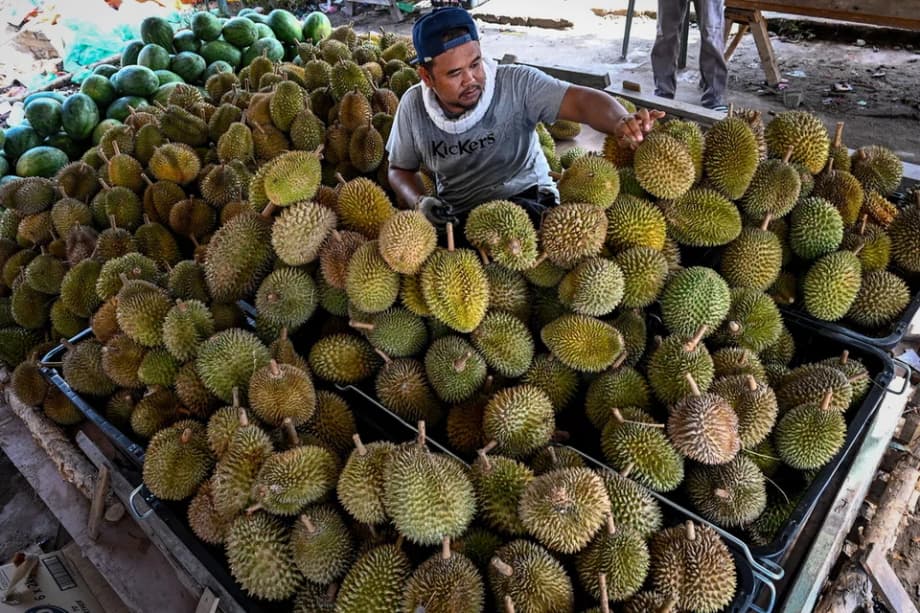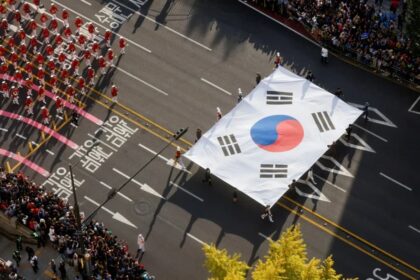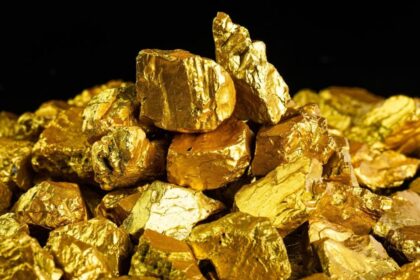A fruit with two national claims
Durian, the king of fruits across much of Southeast Asia, now sits at the center of a friendly but very real contest between Indonesia and Malaysia. A Malaysian industry group wants durian recognized as Malaysia’s national fruit and proposes a National Durian Day. Indonesian officials have pushed back, saying their country grows far more and has a deeper claim. Both sides are tapping into powerful currents of identity, economics, and branding tied to one of the region’s most recognizable crops.
The latest flashpoint came when Indonesia’s Coordinating Minister for Food Affairs, Zulkifli Hasan, objected to Malaysia’s proposal. He pointed to national data showing Indonesia harvested about 1.96 million tonnes of durian in 2024, the country’s highest output in five years, with large volumes coming from Java, Sumatra, Kalimantan, and Sulawesi. Malaysian output is smaller, even as its premium varieties have pushed up export value.
In Malaysia, the Durian Manufacturer Association has asked the Agriculture and Food Security Ministry to confer national fruit status and to mark July 7 as National Durian Day. The Musang King geographical indication was also renewed through March 2034, underscoring Malaysia’s push to protect and promote its most famous durian variety. The debate has become a test of soft power as well as farm policy, with both countries keen to anchor their global reputations in a fruit that stirs strong loyalties at home and hefty demand abroad.
Why the durian matters in Southeast Asia
Durian is native to the islands of Borneo and Sumatra and has been cultivated for centuries across the Malay world. Botanists recognize dozens of species in the Durio genus, and many produce edible fruit. The most widely traded species is Durio zibethinus, which has hundreds of named cultivars. The fruit is famous for its creamy texture and unmistakable aroma. Its smell, driven by sulfur compounds and other volatiles, can be irresistible to fans and off putting to newcomers, which is why some hotels and trains in the region restrict it.
From forests to farms to global fame
Rising incomes in Asia have turned durian from a seasonal local favorite into a regional export draw. Thailand leads global exports to China, a market that has grown fast for high grade fresh and frozen durian. Malaysia and Indonesia both contribute to this growth, each with distinctive strengths. Malaysia’s Musang King and Black Thorn are prized by aficionados. Indonesia has a broad production base and a wide range of local varieties that feed domestic markets and a growing processed durian industry.
Who is claiming what and why
On the Malaysian side, the Durian Manufacturer Association filed its request on Nov 10 and proposed July 7 as a national day dedicated to the fruit. Malaysia’s Department of Agriculture director general, Nor Sam Alwi, confirmed the ministry received the application on Sept 8, and said there is no official decision yet on a national fruit or a national day. The renewal of the Musang King geographical indication to 2034 signals a strategic push to defend the name and the standards tied to it.
DMA president Eric Chan has framed the bid as heritage and branding, not ownership. For him, durian is woven into Malaysian life and livelihoods. He argues that formal recognition would support farmers and exporters by reinforcing Malaysia’s premium image in global markets. He also notes that both Malaysia and Indonesia share deep cultural ties to durian and that one country’s choice of a national symbol does not limit the other’s right to do the same.
Indonesia’s production case
Minister Zulkifli Hasan’s response focused on scale and diversity. He cited Indonesian data showing 1.96 million tonnes of durian in 2024, outpacing Malaysia by a wide margin. The crop is spread across the archipelago, which offers resilience and steady supply. Indonesian officials also highlight the country’s wealth of durian species and registered superior varieties. Industry planners in Jakarta have talked about advancing a Nusantara Durian brand, upgrading farm standards, and boosting exports of processed pulp, paste, and snacks.
Production by the numbers
Indonesia’s recent harvests have benefited from broad geographic coverage and favorable conditions in key provinces. Output near two million tonnes marks a strong period for growers. Indonesia’s statistical agency, known locally as BPS, has reported that 2024 production is the highest in half a decade. Malaysia produces less in volume, but it has positioned itself at the premium end of the market. Orchards in places like Pahang and Johor focus on Musang King, D24, and Black Thorn to meet strong demand for consistent taste and texture. The two models are complementary. Indonesia supplies at scale and feeds a vast domestic market while Malaysia extracts higher value per kilogram in export channels.
National fruit vs geographical indication
National symbols are political and cultural choices. They carry meaning within a country’s borders. They do not grant exclusive rights to an entire species. A geographical indication, by contrast, is a legal tool that protects a product name tied to a specific place and production standard. Malaysia’s Musang King GI prevents misuse of that name outside the defined criteria, including by producers in other countries. It does not prevent anyone from growing durian itself.
This distinction explains why both Indonesia and Malaysia can, in principle, call durian a national fruit without legal conflict. Confusion can arise because online lists sometimes claim national fruit status for several countries at once. In practice, a country’s declaration is a domestic decision meant to reflect identity and to support cultural or marketing goals, not a global monopoly on a tree.
Beyond symbolism, the economics
Durian’s economics increasingly shape policy. China has become a key buyer. Vietnamese and Thai ports funnel large shipments, and cold chain improvements have expanded the frozen trade. Malaysia has courted premium buyers who seek specific flavors and textures year after year. Indonesia is pushing processed durian to add value and to reduce waste from bumper crops. Better orchard management, plant health programs, and handling standards matter because bruising and ripeness control can make or break a shipment.
Farm policy and land governance also affect supply. In Malaysia, disputes over land status and licensing have spilled into public view, including enforcement actions against orchards that lack formal tenure. Some farmers say their families have cultivated durian for decades, while state agencies insist on regularizing land use and channeling supply through approved buyers. These fights are about property rights and price control as much as fruit. They show how a national fruit debate touches real livelihoods, from smallholders to large agribusiness.
Health and culinary notes that fuel popularity
Part of durian’s appeal is nutritional. The fruit is energy dense and contains carbohydrates, fiber, and fat, with a mix of vitamins and minerals. Researchers have reported antioxidant compounds such as polyphenols and carotenoids in durian, and some animal and cell studies suggest potential benefits for blood lipids and glucose control. Those findings are early. More human trials are needed before firm health claims. Durian is rich in potassium, so people with kidney disease or those on certain medications should seek medical advice. Its mix of fiber and fat can slow sugar absorption, which helps explain why some varieties score lower on the glycemic index compared with other sweet snacks.
Culinary uses cut across sweet and savory. Fresh durian is the star in dessert shops during peak season. It blends into ice cream and pastries. Fermented durian, known as tempoyak in parts of Malaysia and Indonesia, carries lactic acid bacteria with probiotic potential. Taste profiles vary by variety. Musang King is prized for a thick, creamy texture and a balance of sweet and bitter. Black Thorn and D24 have their own followings. These sensory differences, and the thrill of chasing favorite orchards, keep fans loyal and help explain why brand protection matters to growers and exporters.
Could dual recognition work
There is room for both countries to honor the same fruit. National symbols reflect stories a nation tells about itself. If Indonesia selects durian to celebrate the breadth of its archipelago harvests and Malaysia does so to affirm its premium reputation, both narratives can stand. A cooperative approach inside ASEAN could even raise standards for varietal registration, plant health, and traceability. Shared research on disease resistance and orchard ecology would help the crop adapt to changing weather. Both sides also have reason to guard against environmental damage from rapid plantation expansion. Durian thrives best when genetic diversity and surrounding forests are not sacrificed.
What happens next
Malaysia’s agriculture authorities will study the DMA request, weighing cultural support, export prospects, and public views. A decision on a National Durian Day, and on national fruit status, could come after consultations with growers, state agencies, and consumer groups. Indonesia appears set to continue strengthening its domestic brand and may formalize its own national recognition while pursuing higher standards and better export pipelines. In practical terms, markets will reward consistency and quality. If the two biggest durian heartlands in the Malay world each sharpen their strengths, buyers will see more choice and growers on both sides of the Strait of Malacca will have clearer paths to prosperity.
Key Points
- Indonesia’s food affairs minister cites 1.96 million tonnes of durian in 2024, the country’s highest in five years, as grounds for national fruit status.
- Malaysia’s Durian Manufacturer Association wants durian named the national fruit and proposes July 7 as National Durian Day.
- Malaysia’s Musang King geographical indication has been renewed to March 2034, protecting the name and standards tied to it.
- Malaysia’s pitch centers on heritage and premium branding, while Indonesia highlights production scale and varietal diversity.
- National fruit is symbolic, while a geographical indication is a legal protection for a named product.
- Both countries can recognize the same fruit nationally without legal conflict.
- Durian demand is rising in China, with Thailand leading exports and both Malaysia and Indonesia strengthening their positions.
- Land and licensing disputes in parts of Malaysia show how farm policy can affect supply and farmer incomes.
- Research points to antioxidant compounds and potential metabolic benefits, but more human studies are required.
- Decisions in Kuala Lumpur and Jakarta will likely focus on culture, quality standards, and export strategy rather than exclusive ownership.












